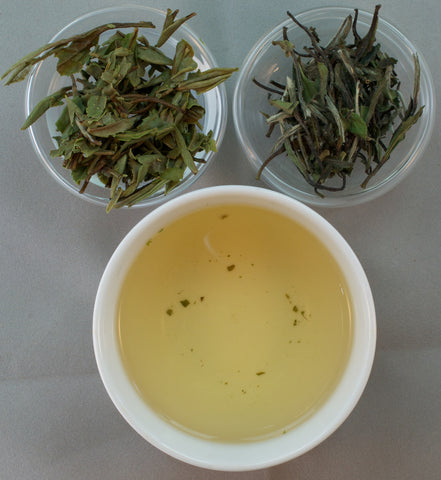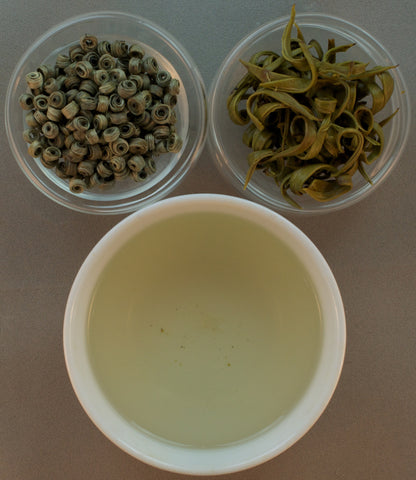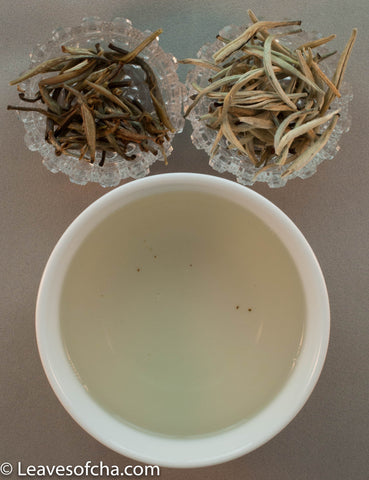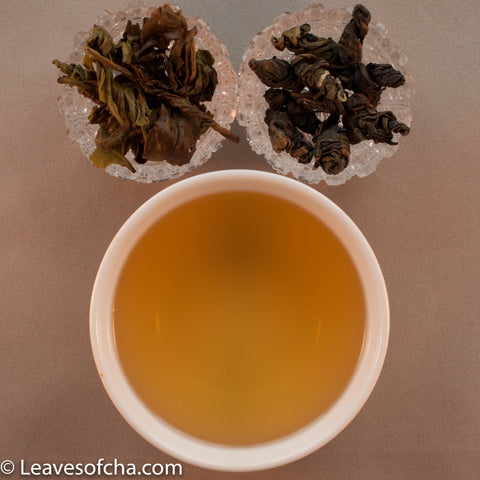This rare tea’s leaves come from wild purple tea trees that grow in the high mountain areas of Jinggu. The trees are a varietal often referred to as purple “ye sheng”. Since the trees are completely wild and relatively remote, this tea is produced in tiny quantities and production cannot be scaled. The cost of the tea is almost entirely due to the labor of finding and plucking the leaf material. It takes about 15 days for them to collect enough to process into 15kg of tea. I sampled 25g in 2017 and loved it. When I decided a month later to add it to the Tea Chest it had already sold out for the year. I usually sell out before the next harvest, so get it while you can.
(I know, I know, another purple tea…I just love them so much. I’ve noticed their rarity often means more (hand)craftiness and skill goes into their making than the more common cultivars. And I’m all about that handmade tea and those heirloom and non-commoditized cultivars)
Provenance:
-
Origin: Han Gu Di village area, Jinggu County of Simao, Yunnan, China
-
Grower/Teamaster: Mr. Zheng
-
Elevation: 1600-1750m
-
Harvest Date: Spring 2025
-
Cultivar: Camellia Sinensis var. Assamica Dehongensis, a varietal of what is often referred to as Purple "Ye Sheng".
-
Cultivation: Wild tea trees growing without cultivation; naturally organic, no certification.
-
Plucking Standard: Bud pluck
-
Processing Notes: Brief withering and hot dry air exposure to halt the oxidation
-
Nickname: Sweet Ya Bao, 甜芽苞
-
History/Pedigree: This is a new tea to the market outside of China.
Brewing Suggestions1:
-
Water: 170-180˚F
-
Tea: 2g per 4oz of water (about a level 1 TB2)
-
Infusion:
-
Western: 1-2 minutes with 2-4 additional infusions.
-
Eastern/Gong fu: Start with a quick 10s steep and then increase steep time by 50% until you reach 60s. Continue at 60s until steeped out (10s, 15s, 22s, 30s,45s, 60s,…)
Tasting Notes:
- Beautiful to look at in the brewing vessel and intensely aromatic for a white tea. Floral sweetness with fruit undertones. Like nothing I’ve tasted before.
1 Brewing suggestions are just that. Try it the suggested way then experiment. Try it over the suggested temperature range, or even hotter with shorter infusions. Some tea drinkers like to use slightly hotter and longer times for each subsequent infusion. Adjust the dosage up or down to see if that changes the profile.
2 Weighing your tea is always the best way to control your dosage. I provide approximate volume measures for convenience but they can be problematic due to the variance in tea leaf shape and size. It’s best to use the single appropriate volume measure for the tea, i.e., don’t try to measure 1.5TB using two spoons meant to measure 1 TB and a ½ TB. Use an actual 1.5 TB measuring spoon. Yes, they make them! I like the oblong ones to handle longer leaf styles.



